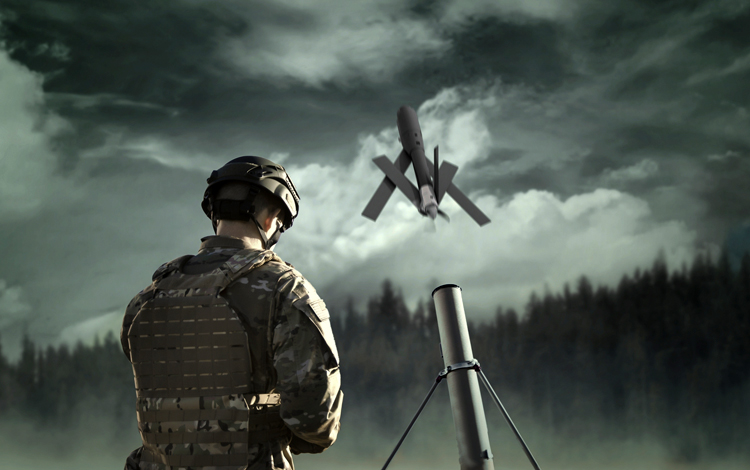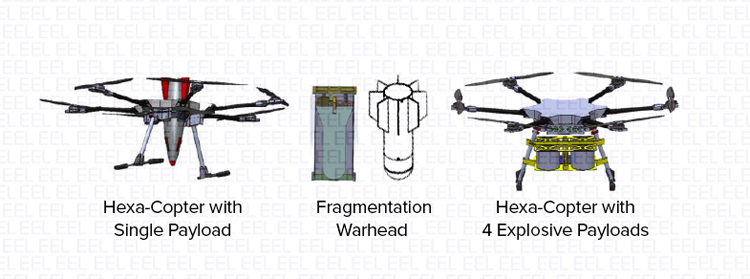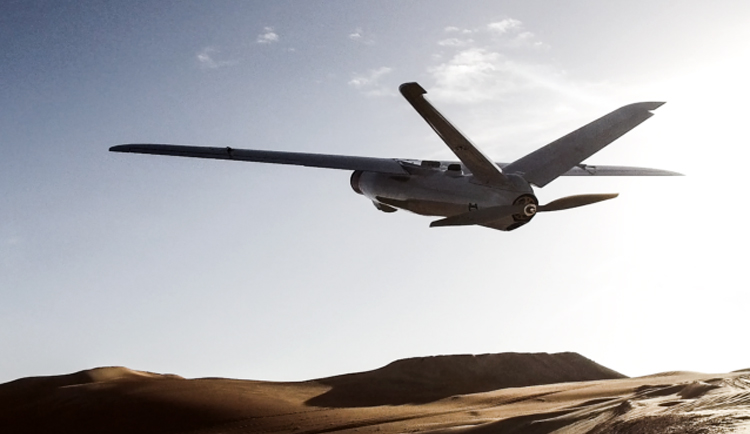INDIAN ARMED FORCES CHIEFS ON OUR RELENTLESS AND FOCUSED PUBLISHING EFFORTS

The insightful articles, inspiring narrations and analytical perspectives presented by the Editorial Team, establish an alluring connect with the reader. My compliments and best wishes to SP Guide Publications.

"Over the past 60 years, the growth of SP Guide Publications has mirrored the rising stature of Indian Navy. Its well-researched and informative magazines on Defence and Aerospace sector have served to shape an educated opinion of our military personnel, policy makers and the public alike. I wish SP's Publication team continued success, fair winds and following seas in all future endeavour!"

Since, its inception in 1964, SP Guide Publications has consistently demonstrated commitment to high-quality journalism in the aerospace and defence sectors, earning a well-deserved reputation as Asia's largest media house in this domain. I wish SP Guide Publications continued success in its pursuit of excellence.
- A leap in Indian aviation: Prime Minister Modi inaugurates Safran's Global MRO Hub in Hyderabad, Calls It a Milestone
- All about HAMMER Smart Precision Guided Weapon in India — “BEL-Safran Collaboration”
- India, Germany deepen defence ties as High Defence Committee charts ambitious plan
- True strategic autonomy will come only when our code is as indigenous as our hardware: Rajnath Singh
- EXCLUSIVE: Manish Kumar Jha speaks with Air Marshal Ashutosh Dixit, Chief of Integrated Defence Staff (CISC) at Headquarters, Integrated Defence Staff (IDS)
- Experts Speak: G20 Summit: A Sign of Global Fracture
Indigenous Loitering Munitions, UAS Drones, ATGM
These are all good developments which need quick follow up actions. 25 per cent of the domestic capital procurement budget (amounting to 21,149 crore) has been earmarked for acquisitions from the domestic private industry this year. This needs to be fully utilised with necessary prioritisation.
 |
The Author is Former Director General of Information Systems and A Special Forces Veteran, Indian Army |

Had the defence sector been opened to the private sector two-three decades back, we would have been far ahead in our pursuit of self-sufficiency, reducing our defence import bills. However, the nexus between the bureaucrats and the governmental defence-industrial sector, plus the red-tape, did not allow this to happen.
With opening up of the defence sector to the private industry, news about development of indigenous weapons and systems are coming up periodically. However, the need still remains that the private sector should be permitted mass production of these products whose trials are successfully completed, not permitting these to be grabbed by the governmental defence-industrial sector under one pretext or another. It is not without reason that in a country like the US, the defence industry is privatised.


Loitering munitions (LM) have revolutionised the battlefield environment. Their use gained global notoriety in the 2020 Azerbaijan-Armenia war over Ngorno-Karabakh. America’s military-support package for Ukraine announced in March 2022 included Switchblade LM ‘kamikaze’ drones. The PLA already fields LMs like the CH817 and WS-43 with 30-minute endurance, plus the air-or-ground-launched CH901, with two-hour endurance and swarm capability.
Three different types of indigenously designed and developed Loitering munitions (LM) were successfully tested in Ladakh at an altitude of over 15,000 feet. The trails were facilitated by the Army Design Bureau (ADB) to rate their performance and safety standards.
From March 21 to 23, 2022, three different types of indigenously designed and developed LMs by Economic Explosives Ltd in partnership with the Bengaluru-based start-up Z Motion Autonomous System Pvt Ltd were successfully tested in Ladakh at an altitude of over 15,000 feet. The trials were facilitated by the Army Design Bureau (ADB) to rate their performance and safety standards. According to sources, all the three systems achieved their endurance targets aftertaking off from high altitude areas.

According to another news report, the Indian Army has bought 100 x WARMATE Micro Loitering Munitions from Poland for the Special Forces. With a range of 30 km, altitude 300 metres and 5.7kg payload (high explosive and thermobaric), these can be effectively used against enemy forces and lightly armoured vehicles.
Media reports of June 24, 2022, have given the good news that Vem Technologies, a private company, has conceptualised, designed and developed an indigenous anti-tank gun missile (ATGM), which has been named ‘Asibal’. The company plans to manufacture ‘Asibal’ soon at its upcoming integrated defence systems facility at National Investment Manufacturing Zone (NIMZ) at Zaheerabad in Sangareddy District of Telangana. Weighing 18.5 kg, the Asibal ATGM is man-portable, lighter that the DRDO missile, and with its state-of-the-art guidance and night vision device, can effectively also be used in counter terrorist operations by day and night.
'Asibal' is undergoing tests at different places and once approvals are accorded, manufacturing would begin. The company already has the license to produce 10,000 tactile missiles annually.
According to V. Venkat Raju, Founder, Chairman and Managing Director of Vem Technologies, Asibal is undergoing tests at different places and once approvals are accorded, manufacturing would begin. The company already has the license to produce 10,000 tactile missiles annually. Raju says Vem Technologies could be among the biggest in the private sector and if everything falls in place, have one million sqft work space ready by 2024-25 to begin large-scale operations.
VEM Tech is part of the Centre’s ‘Make in India’ scheme and is into every vertical like electronics, sensors, servo systems, rocket systems, onboard computers, three types of infra red, laser and RF seekers, missile systems, etc., with its first facility functioning at Shamshabad. According to Raju, it is proposed to have 1,000-foot hangar facility to develop the main fuselage for the Light Combat Aircraft (LCA) and also develop the airframe for the Advanced Medium Combat Aircraft (AMCA), is proposing joint venture (JV) with a US firm to manufacture long-range sniper rifles, a drone system with another foreign firm, and by 2029, develop some level of integrating a fighter aircraft. The firm already has orders worth up to 1,000 crore.
‘Vector and Scorpion’ drone was introduced in 2021 and recently showcased at the Northern Command, both at Jammu and Udhampur, drawing huge response from the military personnel. It is an IP 66-rated drone which can fly during a drizzle, when snowing and has already been tested 5,000 metres above ground level.
Next is the two-in-one unmanned aerial system (UAS), ‘Vector and Scorpion’ drone developed by the private firm Roter Precision Instruments Private Limited. According to Kushagra Agrawal, Vice President of the firm, the ‘Vector and Scorpion’ drone was introduced in 2021 and recently showcased at the North Tech Symposium 2022 in Northern Command, both at Jammu and Udhampur, drawing huge response from the military personnel.
Vector and Scorpion is an intelligence, surveillance and reconnaissance (ISR) drone, having the unique telemetric range of 65 km. According to Agarwal, live feed from Jammu can be received at Udhampur. It is an IP 66-rated drone which can fly during a drizzle, when snowing and has already been tested 5,000 metres above ground level. Agrawal says the drone is in use by the US Marine Corps, French and German police, as well as in the Ukraine Conflict.

The UAS drone with extremely low noise emission (motor off, silent mode), encrypted mesh IP link streaming videos up to 15-plus km and flight time of 120 minutes, makes it perfect for a wide range of non-invasive aerial operations. The two-in-one system design opens up further applications with the “Scorpion" configuration; by removing the wings and attaching a separate set of copter arms, a dedicated multi-copter platform becomes available for an even wider variety of mission applications.
The UAS drone gets mission ready in less than two minutes. The ‘Vector and Scorpion’ drone is to undergo test trials along the Line of Actual Control (LAC) in Ladakh during July 2022, Depending on the success of the test trials, it will likely be inducted into the Armed Forces once the trials are successful.
Finally, ignoring the basics doesn’t bode well for the Atmanirbhar philosophy in defence. Aside from the serious void of in engine technology, our indigenous rubber technology is very poor. We cannot even make basic quality seals required for tanks and ICVs; a seal not being just a piece of rubber. Vendors are able to supply items at prices far below the listed price of Original Equipment Manufacturers who produce, which doesn’t require elaboration. Our receipt and inspection (R&I) infrastructure does not have any facility to actually check the quality of stores.
Our small arm development also has an atrocious history. The Indian Army has recently inducted the Sako .338 TRG-42 sniper rifles from Finland for troops deployed along the Line of Control (LoC) in Jammu and Kashmir. The Sako rifles have reportedly replaced the .338 Lapua Magnum Scorpio TGT by Beretta, and the .50 Calibre M95 by Barrett, which were inducted in 2019 and 2020. The AK-203 assault rifles are coming up in collaboration with Russia but when will we be Atmanirbhar in small arms?





